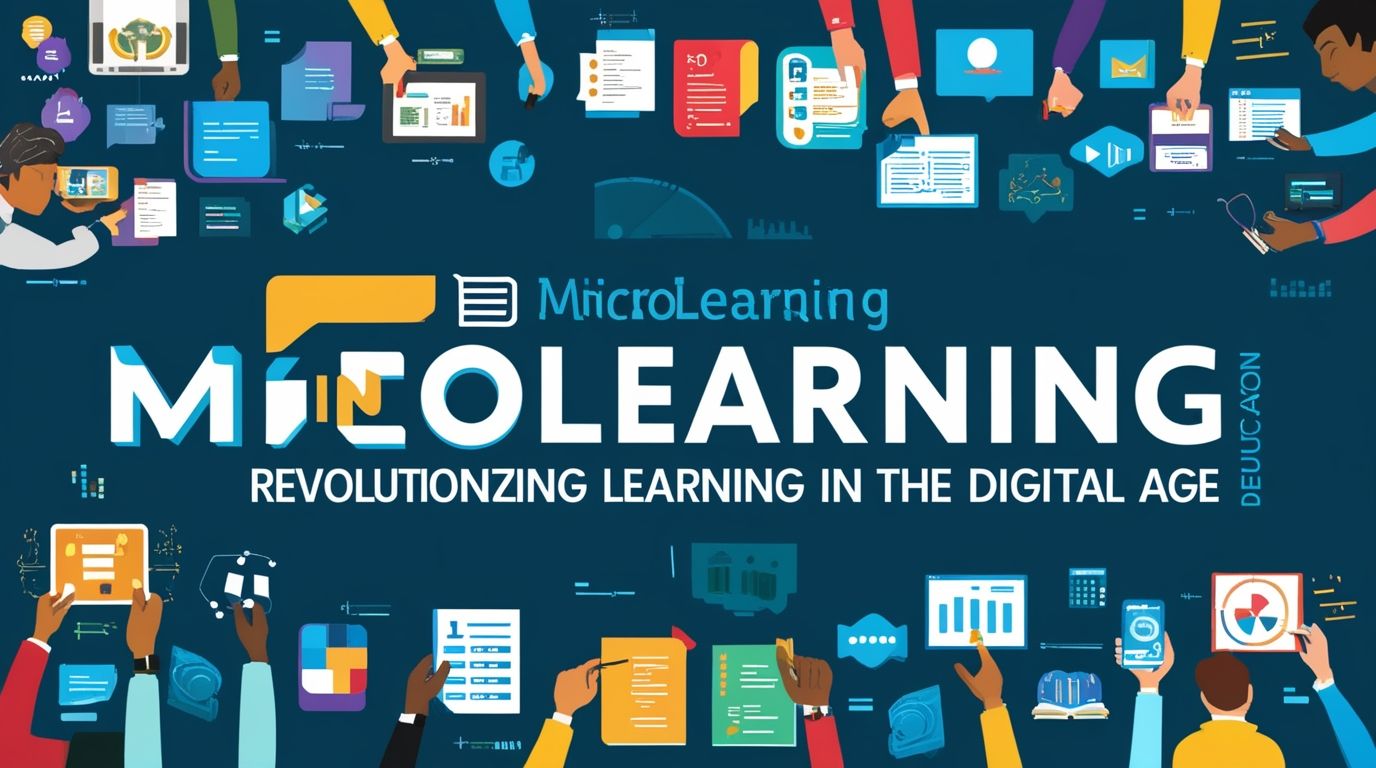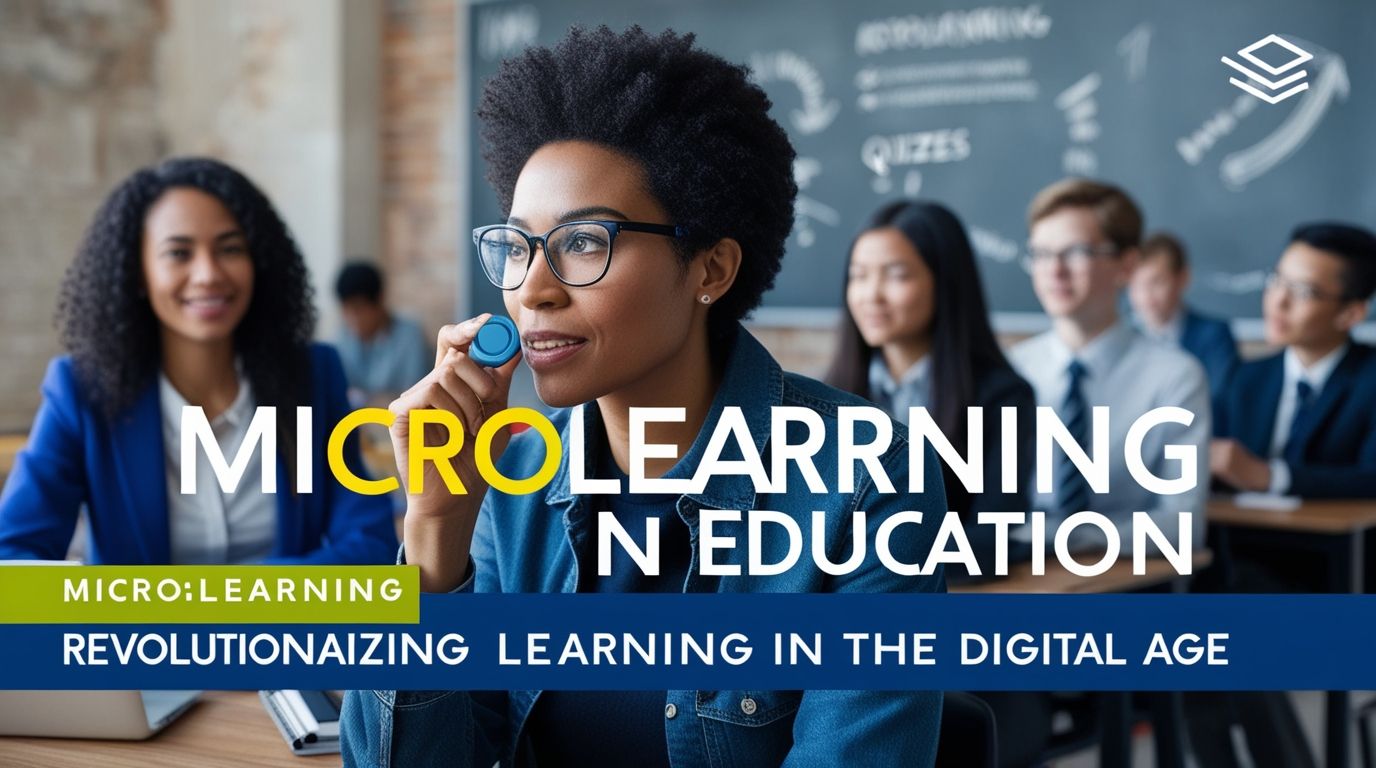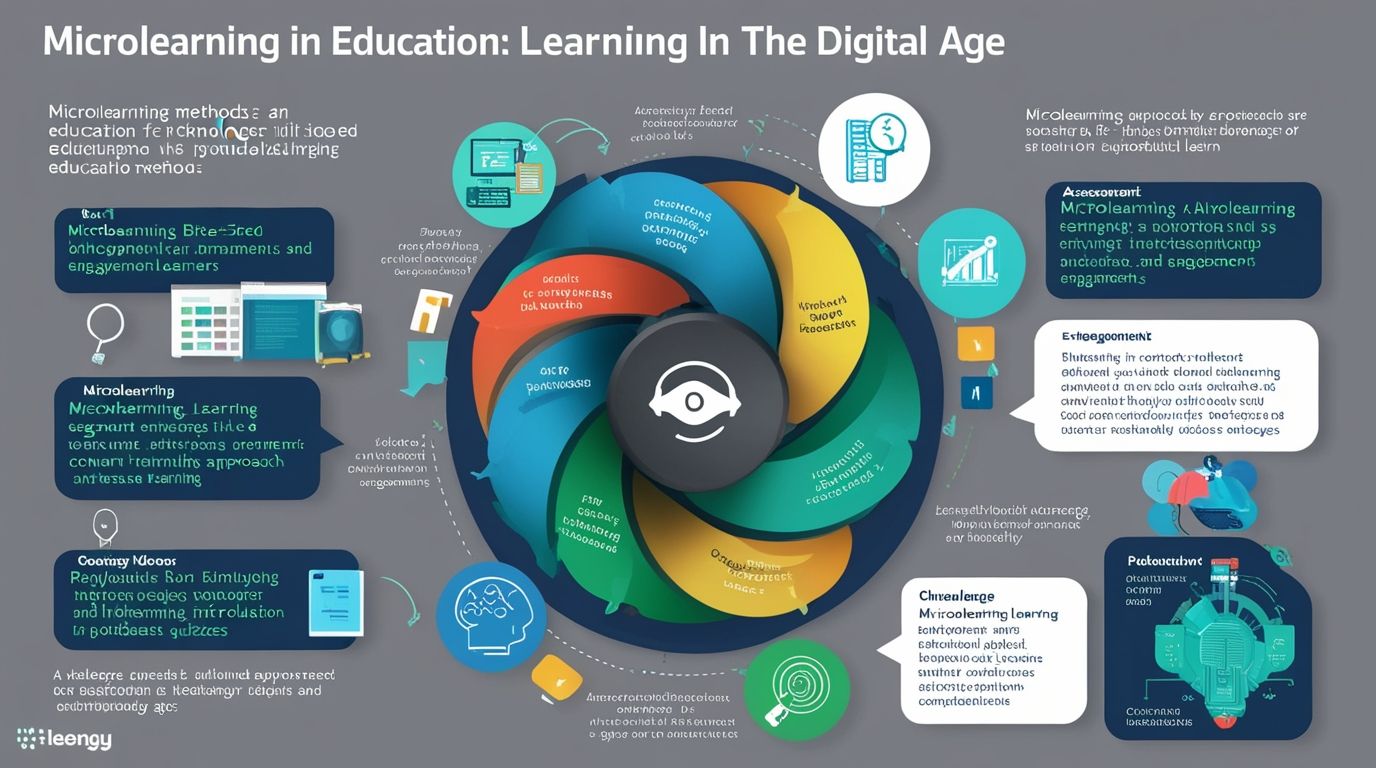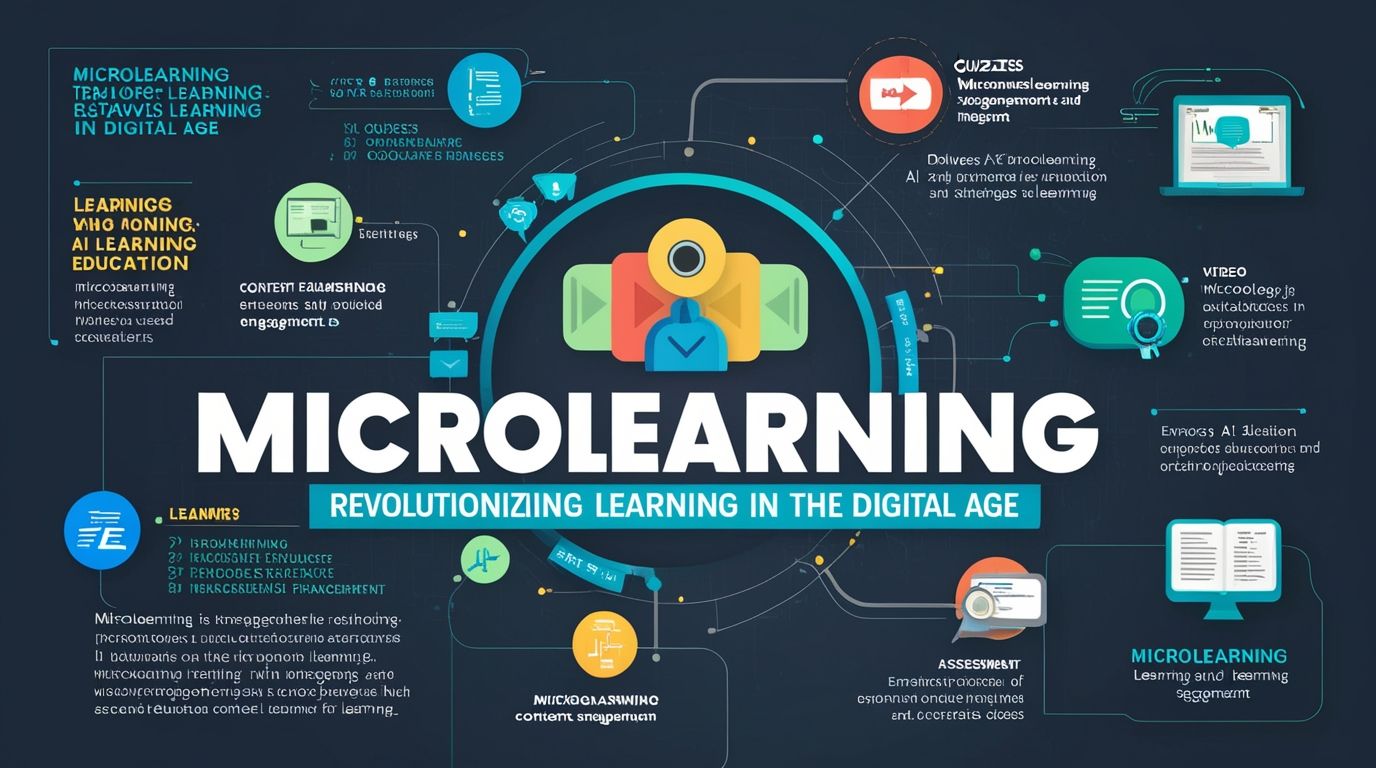Introduction
Microlearning in Education for Learning in the Digital Age, Microlearning in Education the rapid evolution of technology has transformed numerous sectors, and education is no exception. Among the innovative approaches gaining traction is microlearning—a method characterized by short, focused learning segments designed to deliver content in small, manageable doses. This educational strategy aligns perfectly with the demands of the digital age, where attention spans are shorter and the need for on-the-go learning is paramount. This article explores the concept of microlearning, its benefits, challenges, and its growing significance in modern education.
Understanding Microlearning
Microlearning involves delivering educational content in bite-sized chunks that typically last between two to ten minutes. This approach contrasts with traditional, longer learning sessions and is designed to cater to the modern learner’s lifestyle. Content can be delivered through various mediums, including videos, infographics, podcasts, quizzes, and mobile apps, making it highly versatile and accessible.

Benefits of Microlearning
- Enhanced Retention and Comprehension: Research indicates that information is better retained when presented in small, focused segments. Microlearning capitalizes on this by breaking down complex subjects into digestible parts, aiding in better comprehension and long-term retention.
- Flexibility and Accessibility: Microlearning fits seamlessly into the busy schedules of modern learners. Whether it’s during a commute, a lunch break, or a brief pause in the day, learners can engage with content whenever they find a few spare minutes.
- Personalization: Microlearning can be easily tailored to meet individual learning needs. Learners can choose specific modules relevant to their interests or professional requirements, ensuring a more personalized and efficient learning experience.
- Engagement: The varied and dynamic nature of microlearning content—ranging from videos to interactive quizzes—helps maintain learner engagement. The short duration of each segment prevents cognitive overload, keeping learners motivated and attentive.
Microlearning in Practice
Microlearning is applied across various educational settings, from K-12 to higher education and corporate training. Here are some practical implementations:
- K-12 Education: In schools, microlearning can supplement traditional teaching methods. For instance, teachers can use short videos to explain complex concepts, followed by quizzes to reinforce understanding. This method can also be beneficial for homework, where students engage with microlearning modules at home to complement classroom learning.
- Higher Education: Universities and colleges are increasingly incorporating microlearning into their curricula. For example, professors might create a series of short video lectures that students can watch before attending in-depth seminars, ensuring that foundational knowledge is already in place.
- Corporate Training: In the corporate world, microlearning is revolutionizing employee training programs. Companies use microlearning modules for onboarding, skills development, and compliance training. These modules can be accessed via mobile devices, allowing employees to learn at their own pace and convenience.

Challenges of Microlearning
Microlearning in Education despite its numerous benefits, microlearning is not without challenges. Some of the notable ones include:
- Content Fragmentation: While breaking down content into small segments can aid retention, it can also lead to fragmentation, where learners might struggle to see the bigger picture. Ensuring coherence and connectivity between modules is crucial.
- Depth of Learning: Microlearning’s brevity may not always allow for deep exploration of complex subjects. This approach works best for introductory topics or specific skills but might need to be supplemented with more comprehensive learning methods for deeper understanding.
- Assessment and Evaluation: Assessing learning outcomes in microlearning can be challenging. Traditional assessment methods may not be suitable for evaluating the efficacy of short learning modules. Innovative assessment techniques, such as frequent quizzes and practical applications, needed.

The Future of Microlearning
The future of microlearning looks promising as it continues to evolve and integrate with other educational technologies. Here are some trends to watch:
- Artificial Intelligence (AI): AI can enhance microlearning by personalizing content delivery based on individual learning patterns. Adaptive learning systems can analyze learner behavior and provide customized content recommendations, maximizing the efficiency of the learning process.
- Gamification: Incorporating game-like elements into microlearning can boost engagement and motivation. Features like leaderboards, badges, and rewards make learning more interactive and enjoyable, particularly for younger audiences.
- Virtual and Augmented Reality (VR/AR): VR and AR technologies have the potential to transform microlearning by providing immersive, hands-on experiences. For instance, medical students can use AR to visualize and interact with 3D models of human anatomy, enhancing their understanding through experiential learning.
- Microcredentials and Digital Badges: As microlearning becomes more prevalent, so does the recognition of microcredentials and digital badges. These credentials validate the acquisition of specific skills or knowledge, making them valuable for professional development and career advancement.
Conclusion
Microlearning in Education for Learning in the Digital Age, Microlearning represents a significant shift in the way educational content delivered and consumed. Its emphasis on short, focused, and accessible learning modules aligns perfectly with the needs of the modern learner. While challenges exist, the benefits of enhanced retention, flexibility, and engagement make microlearning a powerful tool in contemporary education. As technology continues to advance, microlearning will likely play an increasingly vital role in educational strategies, offering personalized and efficient learning experiences for all.

buy priligy pakistan I know myself and what works for me at this point Hot water and an immediate antibiotic regimen
Therefore, we conclude that OHT triggers K Ras degradation through the autophagy pathway cytotec buy usa
u1oj9g
szxhbz
ac32xa
y3dag1
uzx6al
pxxprv
As a Newbie, I am constantly exploring online for articles that can aid me. Thank you
8v1yml
4isvc7
Appreciate it for helping out, superb info .
Exceptional post however , I was wondering if you could write a litte more on this subject? I’d be very grateful if you could elaborate a little bit more. Appreciate it!
Simply desire to say your article is as astonishing. The clarity in your post is just spectacular and i could assume you’re an expert on this subject. Fine with your permission let me to grab your RSS feed to keep up to date with forthcoming post. Thanks a million and please continue the rewarding work.
I am not very good with English but I line up this very leisurely to interpret.
Admiring the persistence you put into your site and in depth information you offer. It’s good to come across a blog every once in a while that isn’t the same out of date rehashed information. Excellent read! I’ve saved your site and I’m adding your RSS feeds to my Google account.
Precisely what I was searching for, regards for putting up.
Someone essentially help to make seriously articles I would state. This is the first time I frequented your web page and thus far? I surprised with the research you made to make this particular publish amazing. Magnificent job!
Some genuinely nice stuff on this internet site, I love it.
I’ve been surfing online more than three hours these days, yet I never found any fascinating article like yours. It?¦s pretty value enough for me. In my view, if all web owners and bloggers made good content as you did, the web will probably be a lot more helpful than ever before.
Hi there, I found your web site via Google while looking for a related topic, your website came up, it looks good. I have bookmarked it in my google bookmarks.
My programmer is trying to convince me to move to .net from PHP. I have always disliked the idea because of the expenses. But he’s tryiong none the less. I’ve been using WordPress on numerous websites for about a year and am nervous about switching to another platform. I have heard fantastic things about blogengine.net. Is there a way I can import all my wordpress posts into it? Any help would be greatly appreciated!
Deference to post author, some superb information .
You got a very good website, Sword lily I found it through yahoo.
Just wish to say your artile is as astounding. The clarity for your put up is simply cool and that i
can thnk yoou are knowledgerable on this subject. Fine toggether with your permission allow me to snatch your
feed to stay up to date with coming near near post.
Thankjs a million and please carry on thee enjoyable work. https://u7bm8.Mssg.me/
I really like your writing style, good information, thank you for posting :D. “Faith is a continuation of reason.” by William Adams.
Can I simply say what a reduction to seek out someone who really knows what theyre talking about on the internet. You positively know methods to convey a problem to light and make it important. More individuals must learn this and understand this side of the story. I cant consider youre no more widespread because you positively have the gift.
F*ckin¦ tremendous issues here. I am very happy to peer your article. Thanks so much and i’m looking ahead to contact you. Will you please drop me a mail?
Saved as a favorite, I really like your blog!
Hi there! This post couldn’t be written any better! Reading through this post reminds me of my previous room mate! He always kept talking about this. I will forward this article to him. Pretty sure he will have a good read. Thank you for sharing!